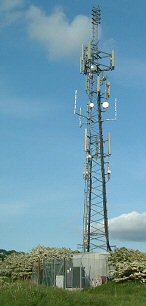


   |
About TETRA |
|||
|
What is it, and what are the problems? |
For full and complete descriptions of TETRA, see our links page. But briefly, TETRA stands for ‘Terrestrial Trunked Radio’. It is the new police radio system, operated by O2 under the brand name Airwave.
‘While O2 may be contractually able to go ahead with such a programme, it is my opinion that their proposition to take coverage away from officers, offer to sell it back to them and then, if it is purchased, offer no guarantees as to the coverage, leaves them morally and ethically bereft.’ (Joe Grant, General Secretary, Scottish Police Federation) Now read more on the history and concerns of TETRA Airwave TETRA/Airwave might well be praised for bringing the emergency services clear speech that cannot be listened into by criminals, and for sending text messages. Undoubtedly it has brilliant features. Asbestos has good features too and so have controlled drugs – in the right place! What we are saying is that the technology to deliver those features is not safe, and other, safer, systems could deliver exactly the same. Previously the emergency services have used VHF radios, but they quite rightly need something better. Mobile phones are better, and with the latest encryption would do a great deal better than the old VHF. Other countries use a system called TETRAPOL, successfully and uncontroversially. TETRA, however, is a Home Office initiative that employs a different technology, is untested, costly (£3 billion start up cost alone), involves 3,370 new base stations nationwide, and was contracted to be fully operational by the end of 2005, because the old VHF frequecies had already been sold off to commercial operators (for £26 billion). Since Airwave cannot deliver what O2 still promises to Government (eg full data communications), they could either double the number of masts (with TETRA 2) to help make it work, or ask all police forces to buy extra equipment to make up the deficiency by piggy-backing onto the cellular networks – which in fact is exactly what has happened! Technical problems aside, masts have been erected around the country, many without due planning permission, many in densely populated areas, and causing alarm among people about potential health risks. The fundamental issue that worries most people (apart from use of our taxes and doubts about the way the Home Office contract was awarded) is that the system uses pulsed microwave radiation, at a pulse frequency of 17.6Hz, which is very close to a key frequency of electrical activity in the human brain at 16Hz (our beta brain waves are around 13Hz to 20Hz). The defence from anyone with a vested interest in TETRA/Airwave (the brand name) is usually that either there is no pulse (remember in history at school Nelson and ‘I see no ships!’?), or that the intensity of the radiation is too low to matter. [Since people keep writing in, the definition of microwaves being from 300MHz to 300GHz is the 1998 definition as used by the NRPB.] Symptoms of the effect this has on people are recorded to include sleep disorders, dizziness, nausea, headaches and migraine, rashes and itching, irregular heartbeat and shortness of breath (see Health). Why is TETRA so different from other risks in life? Because despite all the evidence of people suffering health symptoms, you cannot escape it, or choose to be exposed to it or not. TETRA is a pulsed signal from masts that run on full power 24/7, Unlike mobile phone masts that only respond as required. Your Government is insisting that this situation should not change. (See also our page on choice and rights.) And let us not forget our dedicated police officers, who will have to use TETRA handsets (like big mobile phones) over which there never has been any argument about the pulsed nature of the radiation. Sadly, they are not allowed to protest. If you use terrestrial television the chances are that you will also experience TV interference, from mild ‘jazziness’ to a total loss of signal. When you have read these pages, try the O2 Airwave factsheet on this, and make your own mind up (it’s a small PDF file). Summary of what is different about TETRA
|
 Bright arms of TETRA at Carden Avenue, Hollingbury, Brighton and Hove, next to Asda.
Bright arms of TETRA at Carden Avenue, Hollingbury, Brighton and Hove, next to Asda.
|
|
Home | |||